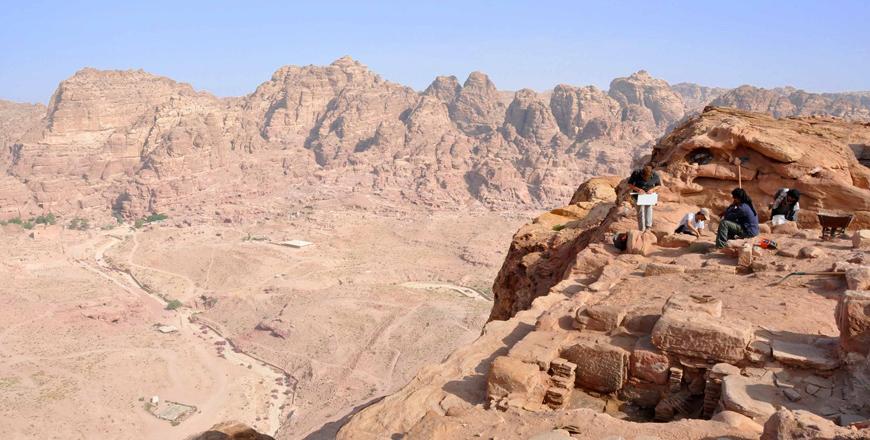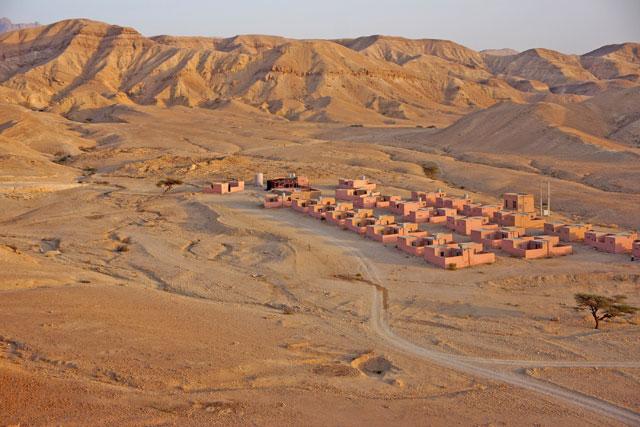You are here
Centuries old winepresses reveal Nabatean Kingdom’s wine production
By Saeb Rawashdeh - Aug 07,2018 - Last updated at Aug 07,2018

A winepress found north of Malghan in the Petra hinterland (Photo courtesy of Fawzi Abudanah)
AMMAN — The wine trade was a significant source of income for the Nabataen Kingdom and many winepresses are well preserved inside the Petra region, bearing witness to the ancient winemaking practices.
Researchers found a number of ancient winepresses scattered in the Petra hinterland while studying trade routes, including two seasons of field research conducted in 2012 and 2014.
“We recorded 10 winepresses so far, although the project during which they were discovered was initiated to record the ancient road network in the hinterland of Petra,” recalled Fawzi Abudanah from the Archaeology Department at Al Hussein Bin Talal University in Maan.
The Jordanian scholar believes that the number of winepresses in the Petra hinterland is therefore not final and that many still exist, awaiting for researchers to find them.
“The fact that winepresses do exist in our study area confirms that the wine production was widely spread in the Nabataean Kingdom and not restricted to certain areas like Beidha, north of Petra,” Abudanah continued, adding that the wine production appears not only to have been a social and cultural norm, but also an economic need due to the high demand for wine in the ancient world, particularly the Mediterranean region.
Nabataeans were skilful traders who operated not only in the territory of the modern Jordan and the northwestern part of the Arabian Peninsula, but they facilitated trade from China and India to Rome, Greece, Syria and Egypt, he explained, noting that in these countries, ancient Nabataeans established their trading posts which were revealed by the discovery of figurines and statues of gods of the ancient Nabataeans in Italy.
“We do not have enough information to confirm the markets to which the Nabataeans exported their wines, but the available evidence indicates that a large amount of wine was being consumed locally and some amounts might have been exported to regional markets... and they used the same trade routes as for spices and frank incense as there is no reason to think otherwise,” Abudanah underlined.
Primary historical sources are missing so researchers need to rely on “archaeological evidence” as the “sole source” of information, he elaborated, adding that “further field investigations and research are required to collect more information about wine production in the hinterland of Petra”.
The researchers believe that the winepresses are Nabataean originally, but they remained in use in later periods. “Water was not necessary for the production process, it was available mainly from springs and from rock-cut cisterns,” Abudanah explained, adding “I am going to continue this research by recording more winepresses next year or whenever a fund is available.”
Related Articles
PETRA — New findings of various local and international researchers focusing on commercial ties between the Nabataean Kingdom and Rome, Indi
AMMAN — Professor Fawzi Abudanah from Al Hussein Bin Talal University in Maan conducted survey at Udhruh, a site located some 15 kilometres
AMMAN — Located in Wadi Araba, 12 kilometres northwest of Petra, Bir Madhkur was a Roman fort and a settlement on the well-known Incense Rou















